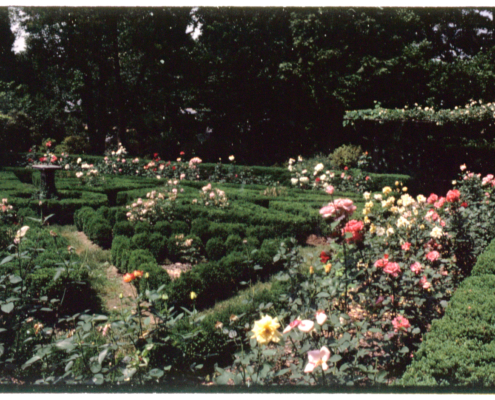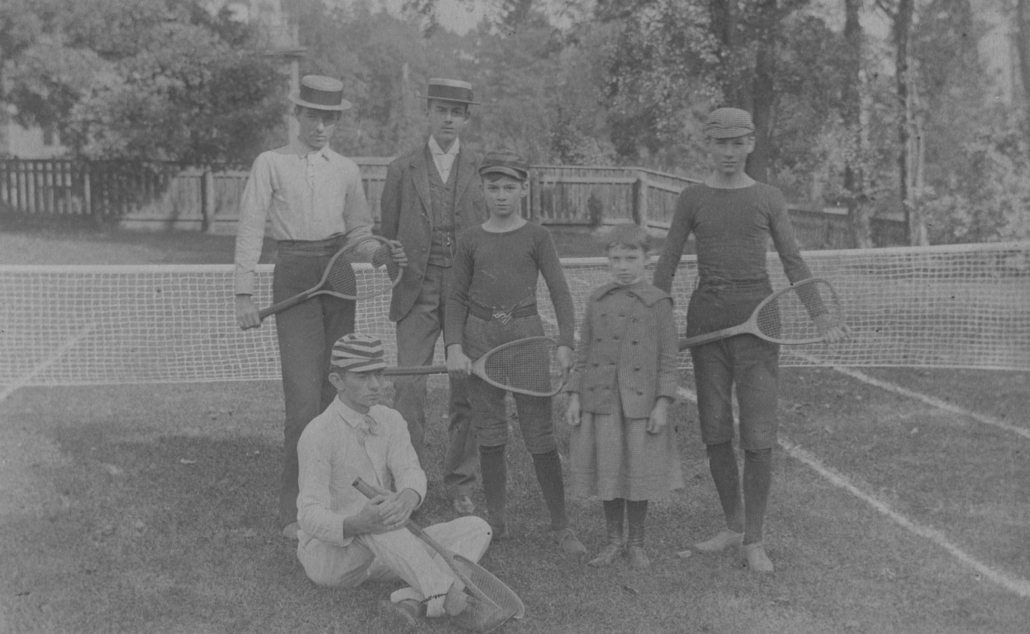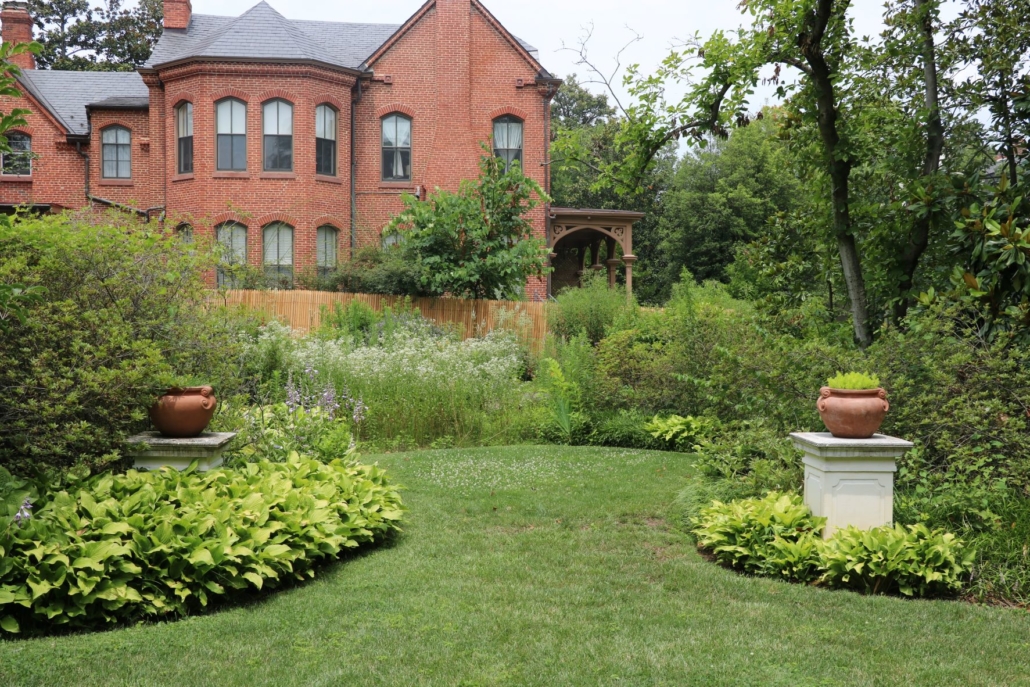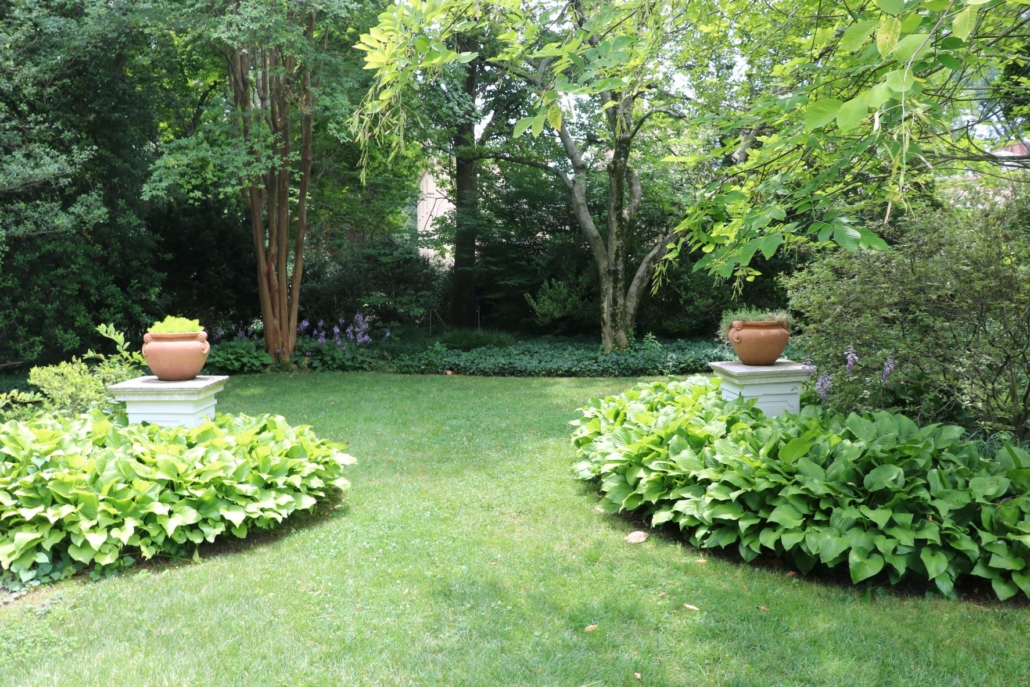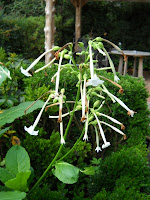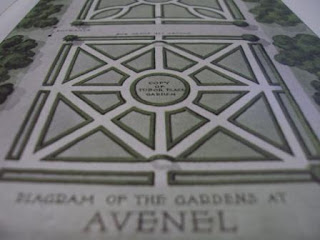I think the greatest measure of a gardener’s ability
is the ability to water and feed plants correctly.
A plant can be as easily killed by overwatering as by underwatering; in fact, possibly more easily. However,
when a plant shows the need for water, don’t hesitate.
These are the words of Armistead Peter 3rd, Tudor Place’s last private owner. Given the weather of recent days, we take to heart his remark, “Don’t hesitate.”
July’s heat wave, the mid-Atlantic’s worst since 1995, imposes excessive environmental stresses on designed landscapes like the historic garden at Tudor Place. Whether in containers or beds of various types, in conditions like these, all our plants need watering. While our aims are historic, maintaining plantings installed by the Peter family over two centuries, we turn to the most modern methods we can to conserve water and water only when necessary.
 |
For a public garden, also hosting beautiful weddings
and other events, green lawns are a priority. |
Our lawns are seeded with tall fescue, which needs watering all summer to prevent dormancy: As a public garden which hosts events, we do keep our lawns green as best we can. We are lucky to have automatic irrigation on the South Lawn, reaching almost an acre of turf, with runoff benefiting the perimeter plantings and islands. But the formal garden rooms on the house’s north side are less fortunate. The North Garden must be watered by hand, sprinkler and, to minimize water loss through evaporation, soaker hose. We water in the early morning, to give foliage time to dry and thus reduce the spread of powdery mildew. With an older pipe system, only a few sprinklers can run at a time, so water pressure must be monitored.
 |
| Morning watering in the Bowling Green. |
We water the garden in sections, as our diverse plantings each have their own requirements. Mature plants are watered less often than newly planted material, and established trees require less water than herbaceous beds. We concentrate on the container plants, which can dry out quickly, and new trees.
The latter we water weekly, except when rainfall has measured at least an inch. (As Armistead Peter 3rd noted, overwatering can be as harmful as underwatering.) Watering during extreme conditions
 |
Herbaceous beds, like this one on our center walk, are
laid with an eye to plants’ native needs. |
helps minimize heat stress, but we won’t know the full extent of any heat damage for another month or two, when stress symptoms might typically begin to appear.
Every generation has added improvements and applied new learning. Today, our emphasis is on finding suitable environments for our plantings, which reduces the need for human intervention later. As new arrivals are put in, we assess soil conditions in the design phase and embed each according to its “cultural” (soil, water and light) requirements. This helps them thrive.
As you walk through our gardens, you will see evidence of similar care and thoughtfulness, dating back 200 years.
More on the Garden
Garden Programs
Visit the Garden
To visit our gardens: Tudor Place grounds are open Tuesdays through Saturdays, 10 to 4, and Sundays, noon to 4. Self-guided visits to the Garden are free; illustrated garden maps and smartphone audio garden tour information are available in the Visitor Center.
Originally posted July 2011; links updated March 2015.

